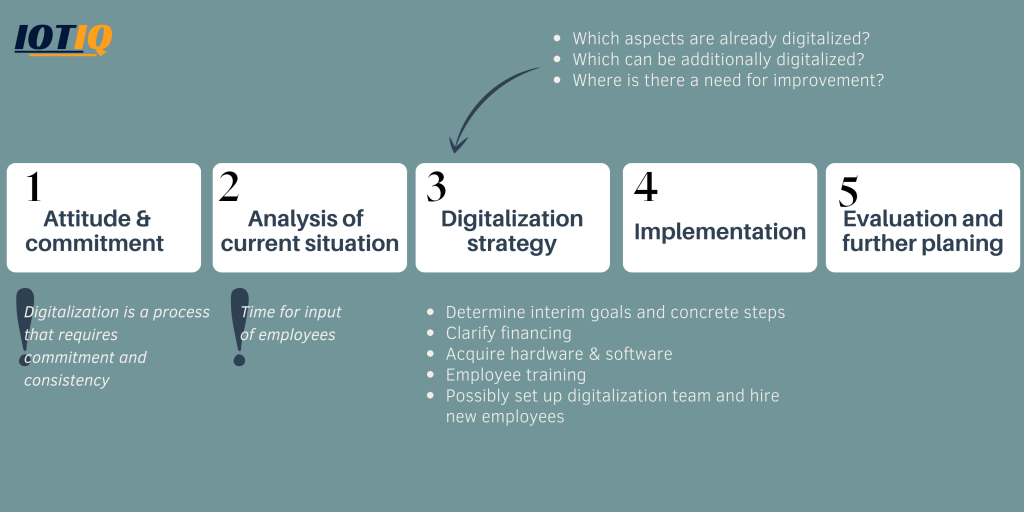Digitalization is the word of the hour. Originally describing only the process of converting analog media into a digital format, it now stands for transformation processes on a much larger scale.
All areas of life are affected by these processes. Private communication and media use, organization of everyday life, (slowly but surely also education) and of course the economy. Yet the digitization trend in 'the economy' is far from being reflected in every company. Small and medium-sized enterprises (SMEs) in particular are having a noticeably harder time with digital transformation compared to large companies.
Why does digitalization matter to SMEs?
But why should SMEs concern themselves with digitalization at all? If their field of activity lies outside of IT, is it really necessary to delve deeper into the subject?
Well, when people ask this question, the answer is usually already clear - yes, there are good reasons for SMEs in all sectors to deal with digitalization. It is obvious that this applies primarily to companies that are active in IT. But the topic is not just relevant to a few highly differentiated specialties. Nor is it a fleeting trend. Rather, it is an all-encompassing change that every company must confront at some point if it wants to be fit for the future. And better sooner than later.
However, digital transformation does not have to be seen as an annoying necessity. It not only prevents companies from being left behind, but can also offer direct benefits. By digitalizing data, for example, information can be made available centrally so that authorized employees can access it at any time.
In the office, a lot of time is spent on activities that serve to prepare for the actual tasks. This is where digitalization can increase efficiency in everyday work. By integrating digital data into automated processes, everyday procedures can be accelerated, leaving more time for the important tasks - the actual work.
Customer relationship management (CRM) programs can significantly improve customer service. Properly planned, customer data can be digitally captured as needed and is available for access at any time. This makes it possible to document customer contact, which can be viewed and tracked by anyone who is authorized to do so. This means that all information is available when it is needed. Targeted customer contact is simplified, and customers feel they are in better hands if they do not have to recount the entire history of their concerns with every contact.


